How to mount your artwork
All you need to know about how to mount your artwork, including 8 steps to making your own mount.
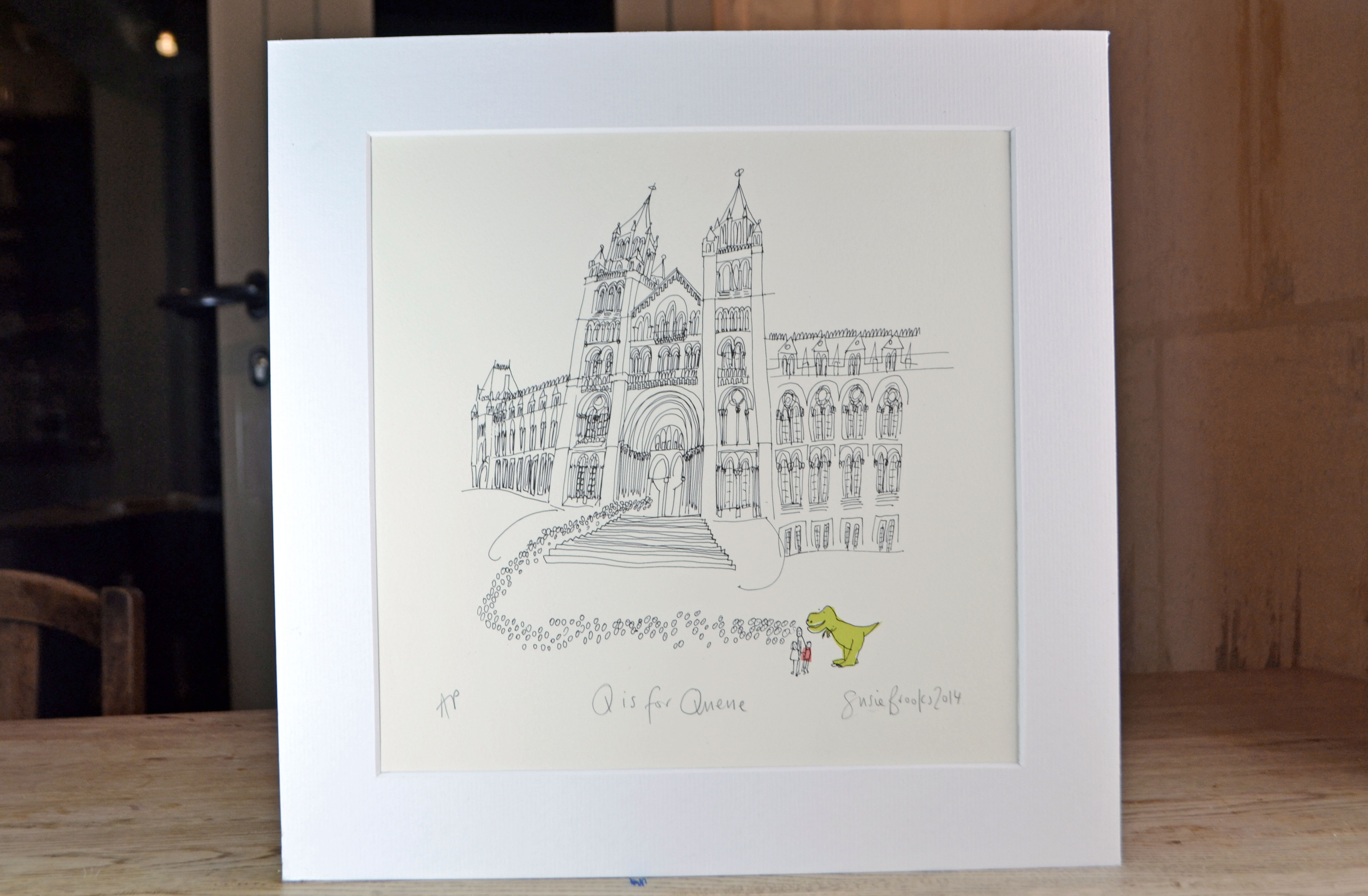
If you're wondering how to mount your artwork, keep reading. A well-executed mount is a brilliant technique to add to your tool-belt, adding an aesthetic quality and creating the perfect environment for the viewer to experience your pictures. But mounts are also for protection – allowing the art to expand or contract, depending on temperature and the moisture content of the air surrounding it.
Crucially, the mount prevents the delicate pigments on the page from rubbing or pressing on the glass of the frame. If you're framing a pastel drawing or oil painting, this is particularly necessary as the work could stick to the glass and be difficult to remove without causing damage.
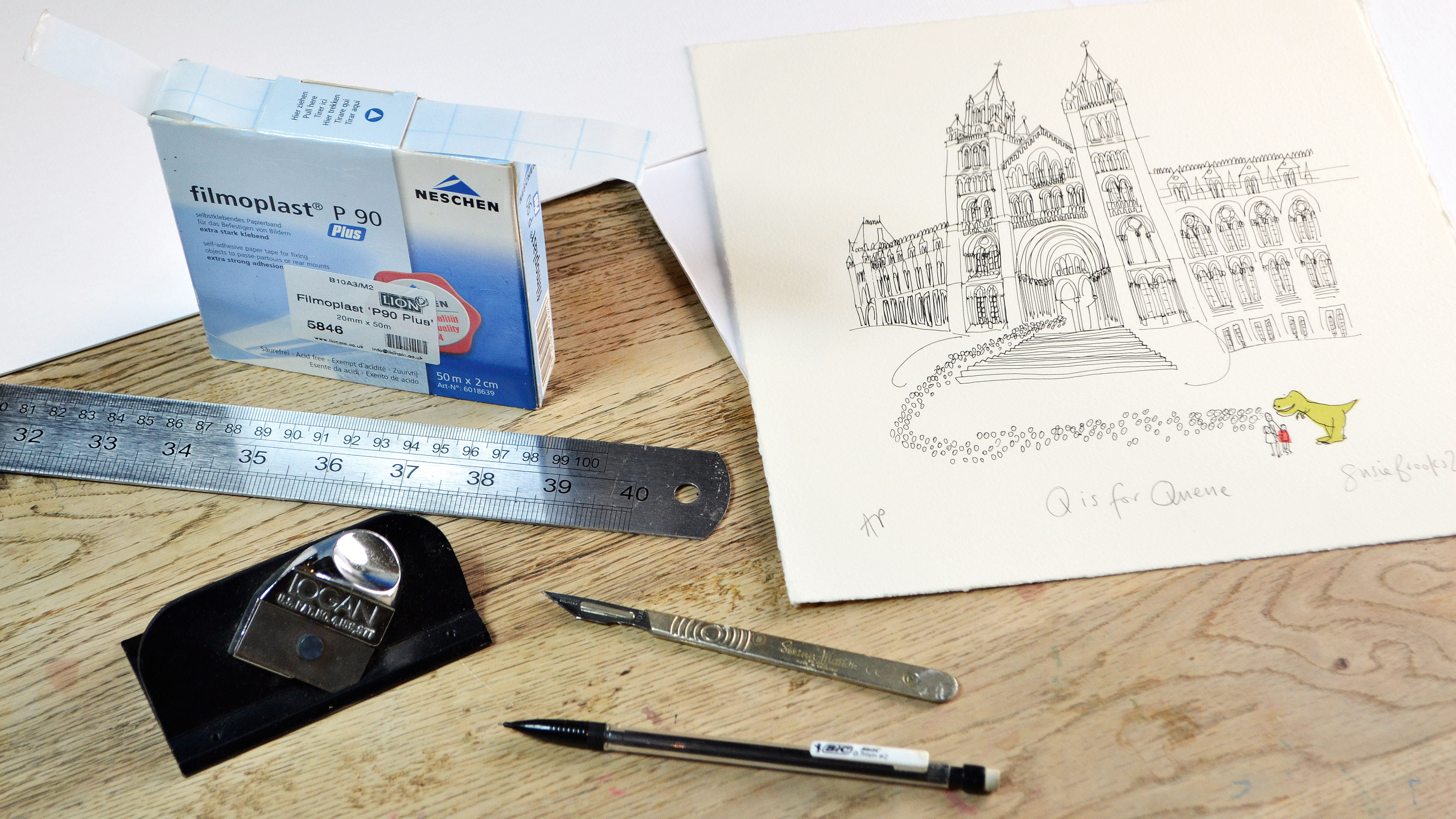
To create the mount you will need a clean, flat working area, a piece of work to mount, and a few basic tools:
Mounting may look simple, but it's a more sophisticated process than it first appears. Most standard mounts will have the window edges cut at 45 degrees to create a bevel and have an angled corner. When you cut through the board at an angle, you create a nice finish but the cut needs to be totally straight and clean, meeting at the corners perfectly.
Here, we run through the basic methods you need to mount your art, but the more you mount, the better you will get, and you will go on to develop your own style. Want more? Try our list of essential art techniques and this roundup of art supplies.
How to mount your artwork: Choosing the right mount board
There are many options when it comes to mount board. Here’s a quick lowdown:
- Museum grade: Top-quality board that’s acid-free with a high cotton content and fade-resistant finish, these are the kind of expensive boards museums use to preserve precious pieces of art
- Conservation grade: A high-quality board, which is acid free and fade resistant – it’s more than good enough for most uses and is cheaper than museum-grade board
- Standard grade: Cheaper, easier to use and widely available from most art shops, ideal for practising mount-cutting techniques or framing projects
Aside from different grades, the board can come with different colour cores, such as black, white or cream. So, regardless of the surface colour, the board that is exposed at the core of it (when the bevel is cut, for example) will reveal a different colour.
Finally, most mount board come in several thicknesses, typically:
Get the Creative Bloq Newsletter
Daily design news, reviews, how-tos and more, as picked by the editors.
- Standard: 1400/1500 microns or 1.4/1.5mm thick
- Thick: 2000/2200 microns – 2/2.2mm thick
- Extra thick: 3000 microns – 3mm thick
You can also buy spare mount board to use as a cutting mat to protect the surface you’re working on. Also note that you may want to practise cutting windows on scrap mount board – remember you’ll only get one chance to get it right for real.
Once you've got all your materials, you're ready to start mounting so keep reading for our step-by-step guide on how to mount your artwork.
01. Measure your artwork and board
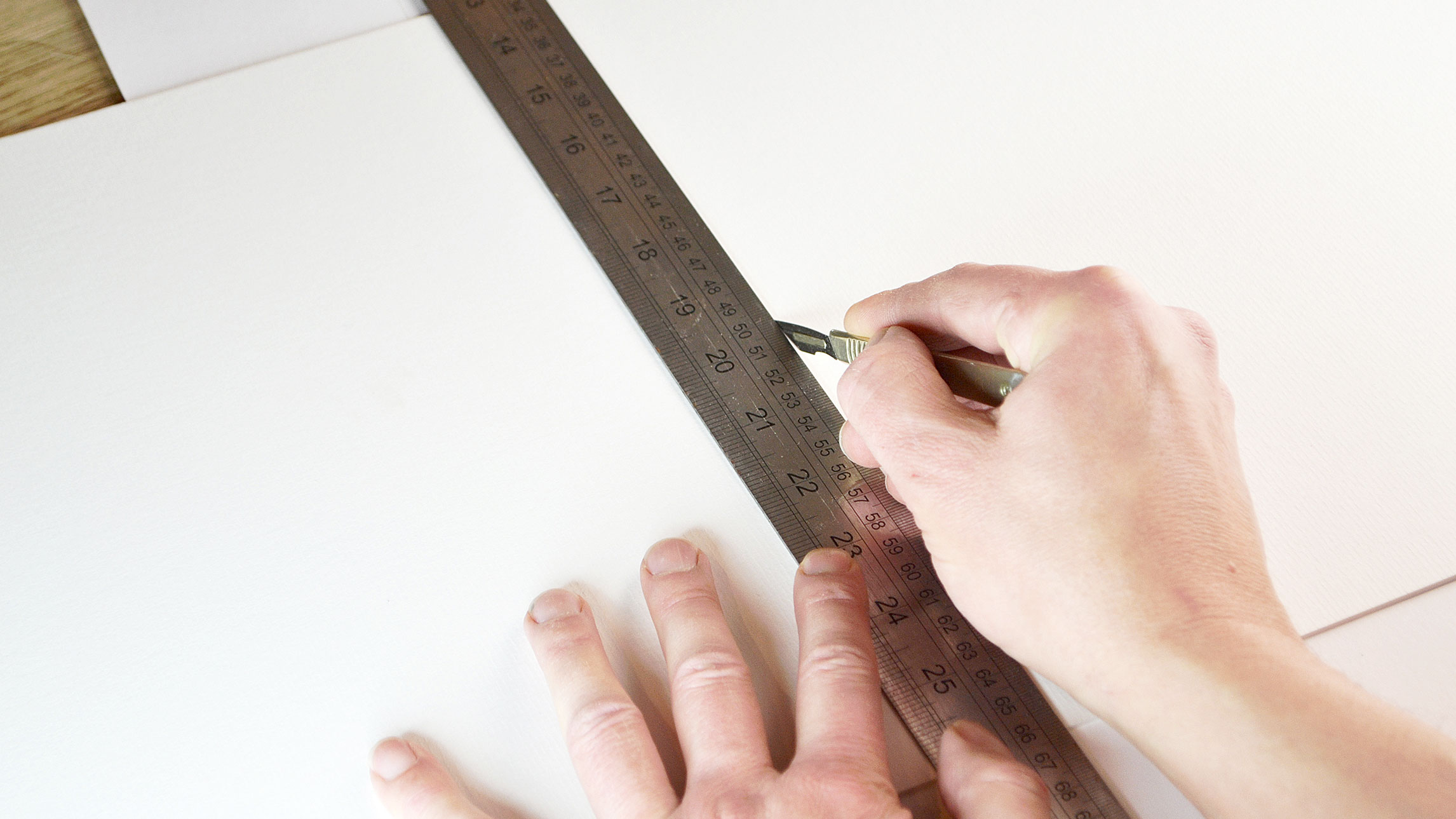
Measure the dimensions of your picture accurately, then decide how big the margin should be around your image – sometimes small images look great with large mounts, and vice versa. For your board, add double the border dimension to the width and height of the picture you are framing, then add a touch more to the height to allow for ‘lower weighting’ (see step 2).
02. Mark the aperture
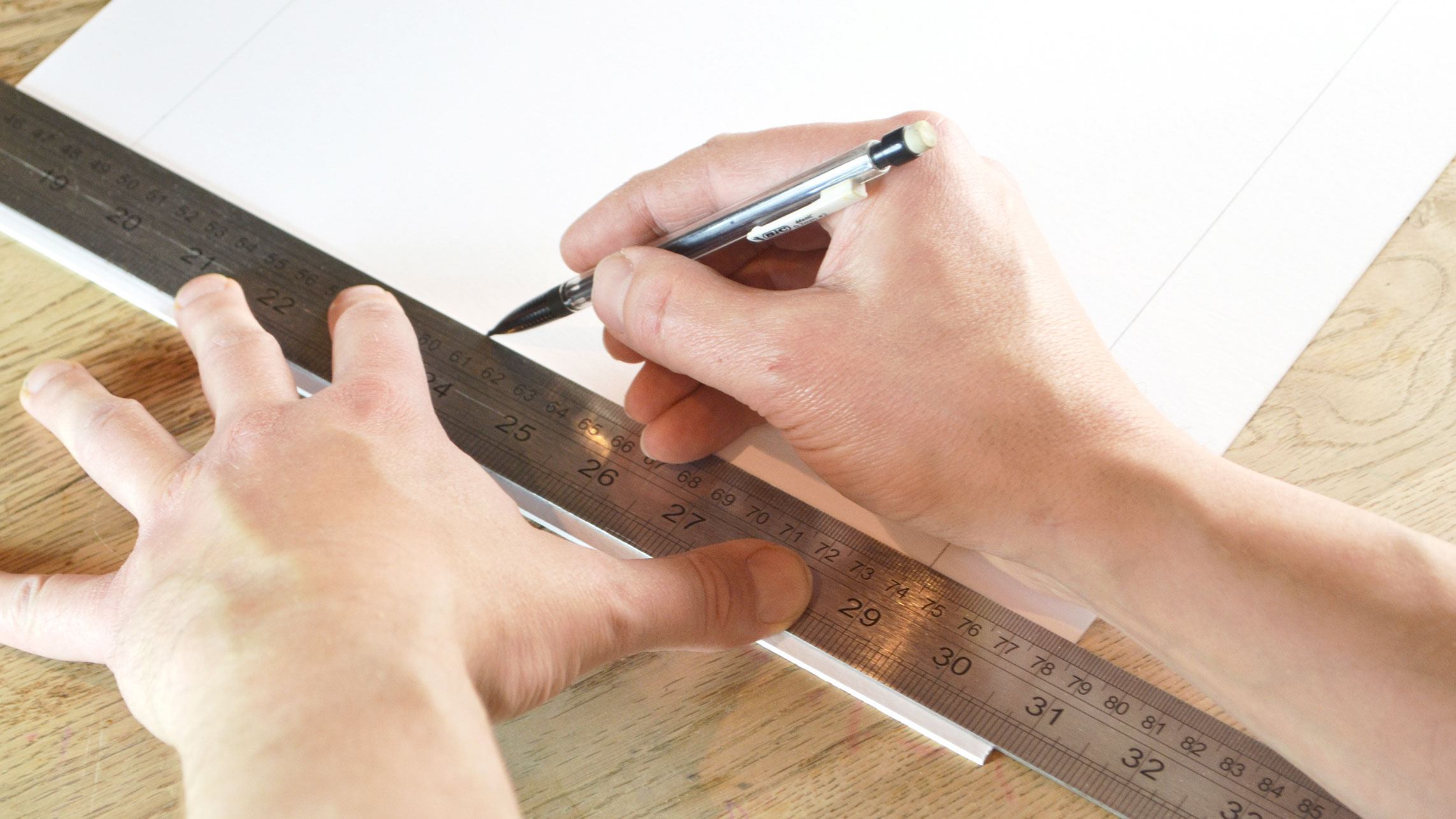
The next step in learning how to mount your artwork is to make sure your working area is clean and dry, then place the mount board face down. With a sharp pencil and ruler mark out the area you will cut away to make the window. I prefer to make the border slightly larger at the bottom, this ‘lower weighting’ has a pleasing proportion (most doors have a larger bottom panel or the bottom drawer in a chest of drawers is often larger), extend your pencil lines beyond the area to be cut.
03. Prepare to cut
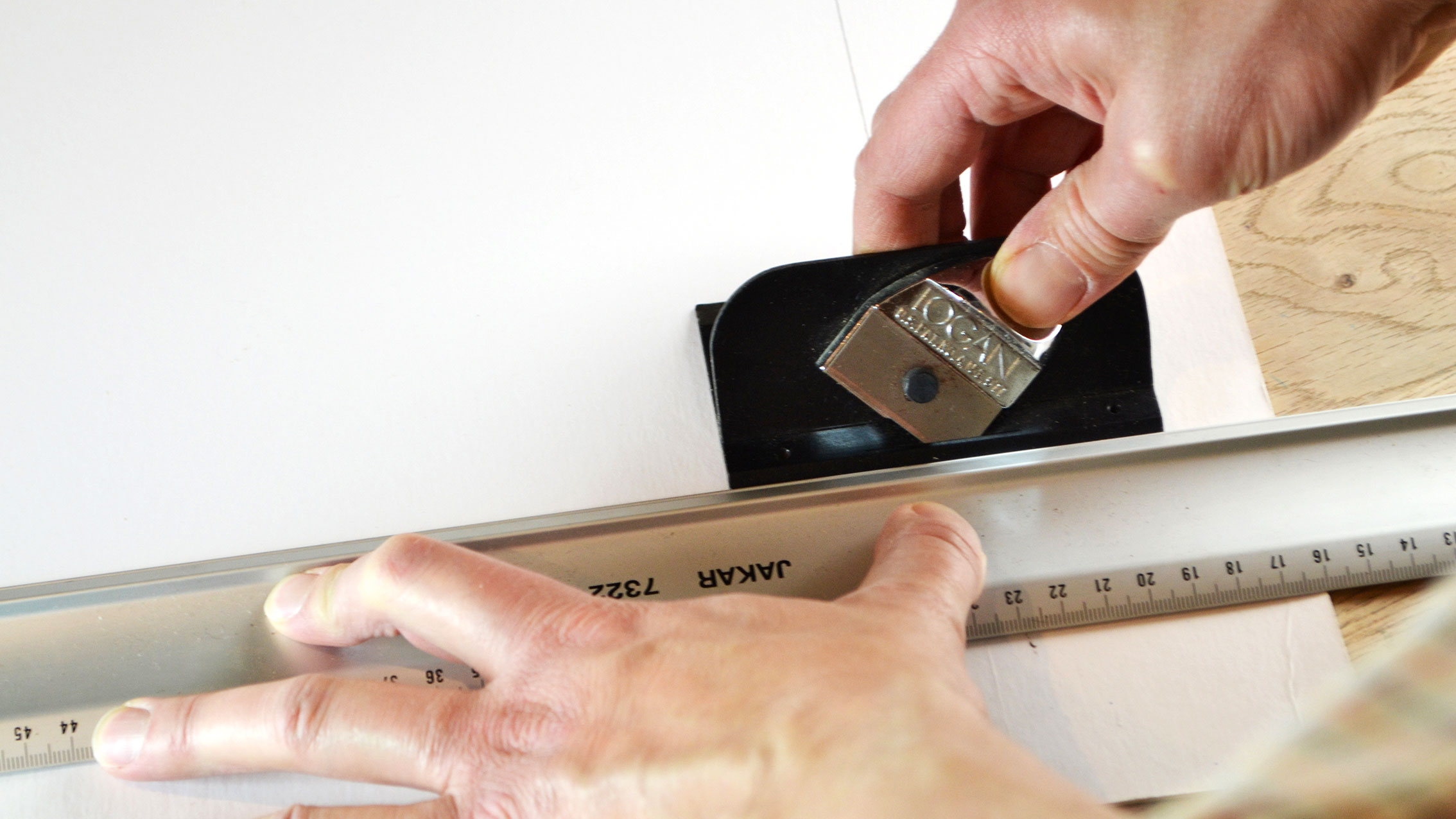
Now you have marked your cut lines it’s time to make the actual cuts. Because we’re cutting at a 45-degree angle through the board it’s important to work methodically so all cuts are in the same direction.
Align the centre marker of your cutter with the right-hand perpendicular cut line and press firmly on the cutter so the blade goes all the way through the board. Maintain this pressure and slowly slide the cutter along the straight edge until the centre marker is just past the the next vertical pencil line.
04. Check and repeat
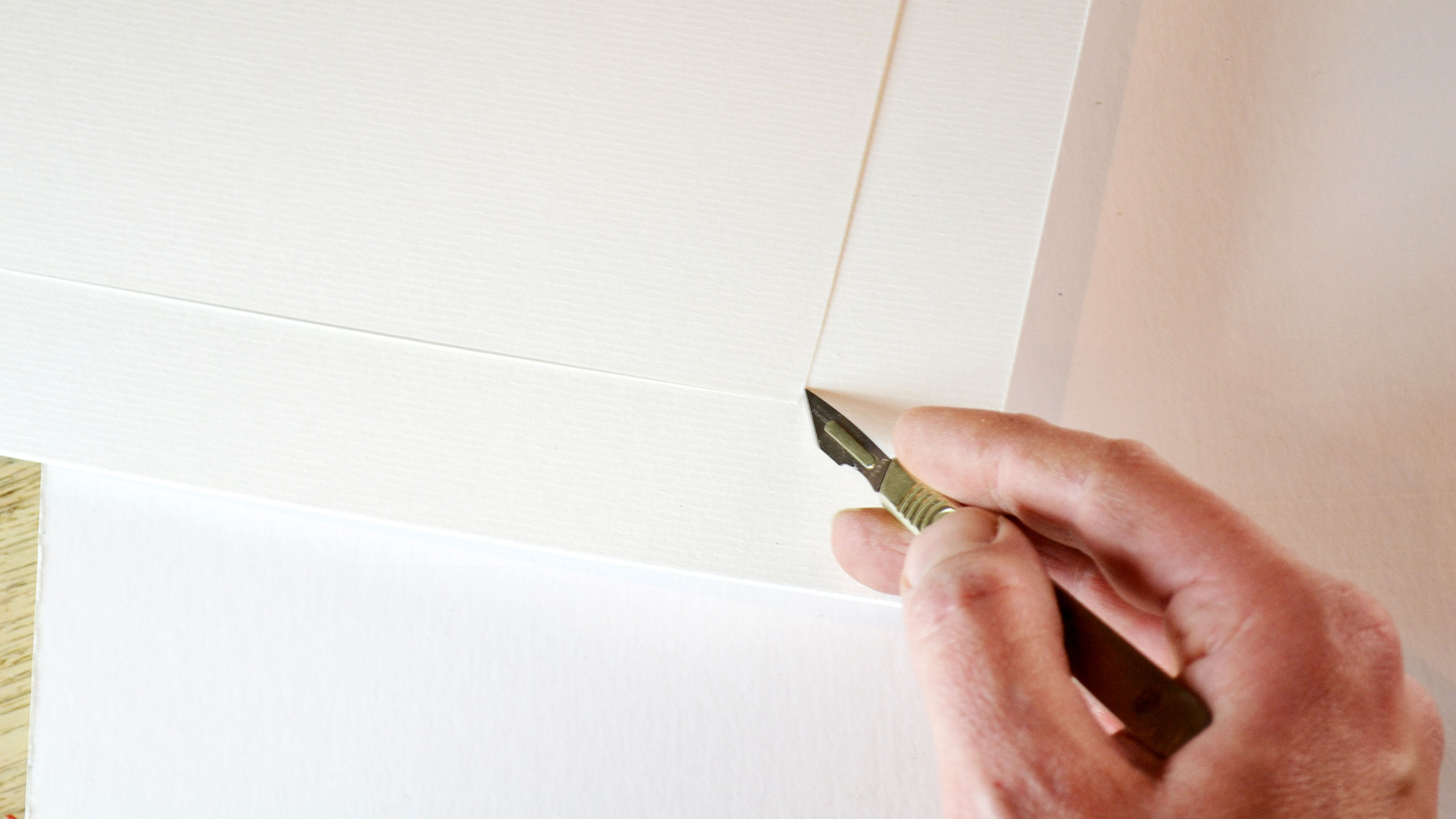
Flip your board over to check the blade has cut all the way through and left a clean incision. Now turn it back over and rotate 90 degrees. Align your ruler to the next pencil line and make another cut. Flip and check that your cut lines meet at the corner and create an accurate bevel – sometimes you need to slide a sharp scalpel blade in at 45 degrees to help release the corner without tearing the surface.
05. Book hinge the mount
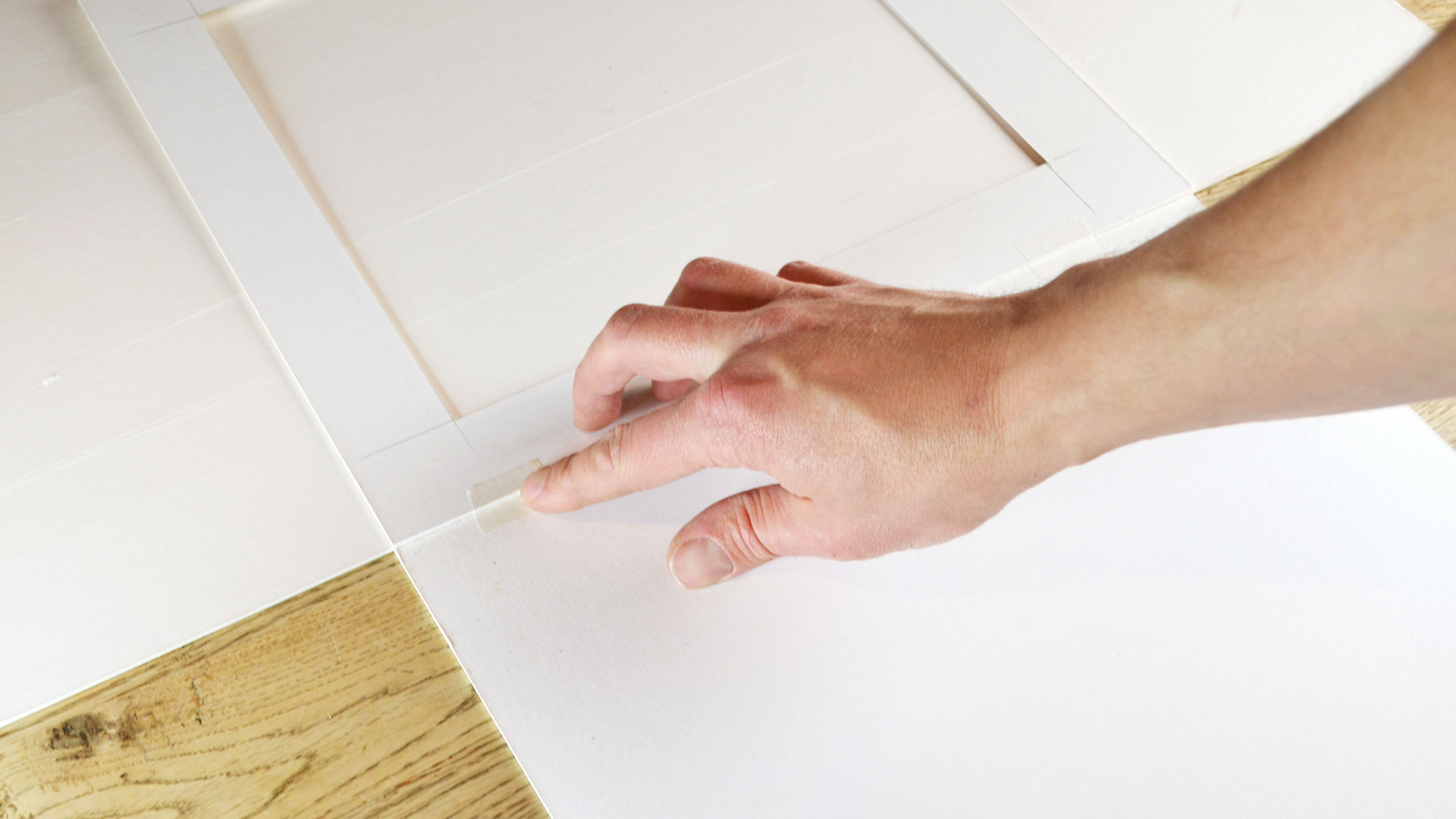
Now that the aperture is cut have a close look at the face of the mount and remove any blemishes and marks with the eraser – be very careful if you’re using a black mount as they mark easily. Take your backing board and place it face up on your work surface.
Place some waste board at the top and align your window to the top edge of the backing board face down. Place a couple of small pieces of tape across the two boards to hold them in place while you apply a long strip of tape across the whole length of the card. Raising the front piece of board will stop the tape from stretching when the boards are folded over.
06. Align the art
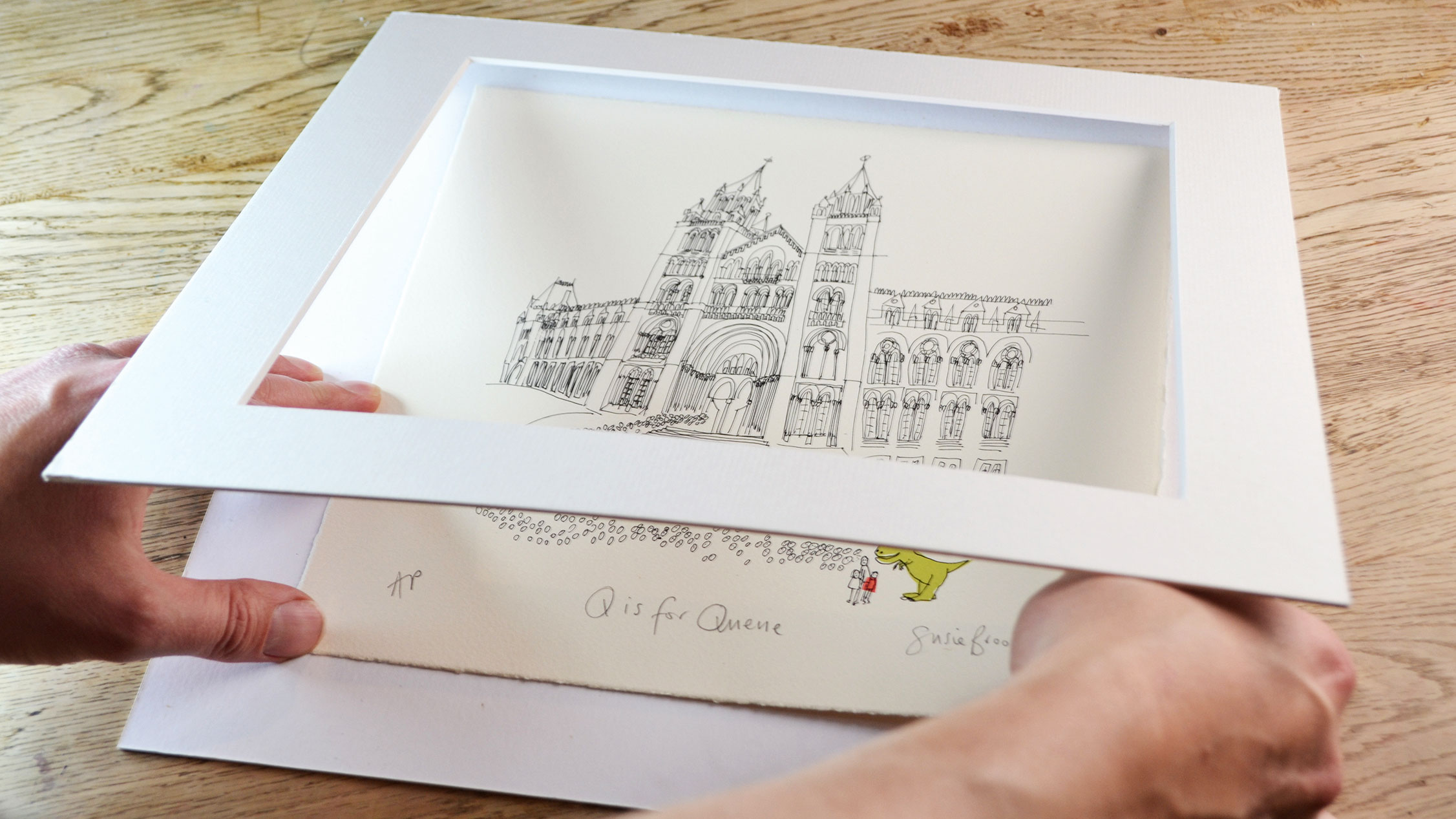
Place your image between the backing board and the window mount and align it centrally. Close the mount together to check it’s aligned accurately. Next lift one of the top corners and place a small length (approx 5cm) of tape face-up underneath the corner so about 5mm is underneath the picture itself, press the picture on top of the tape to form a bond. Repeat with the other corner, being careful not to move the position of the picture. A weight placed on the picture will help.
07. Finish the hinges
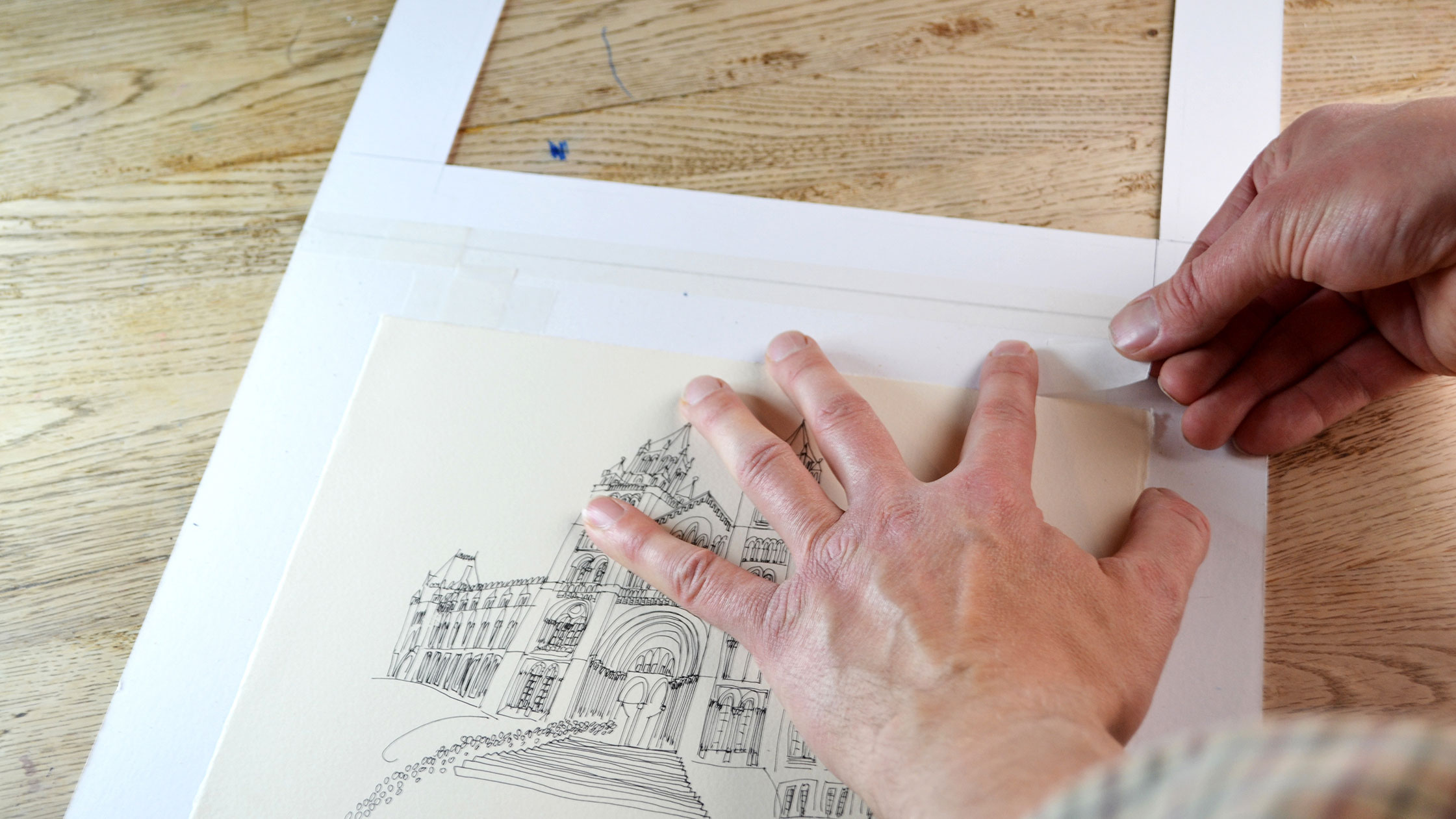
Take a 5cm length of tape and place it across the top of the exposed tape facing upwards from underneath the picture, press this down firmly. Repeat for the other side. These two hinges will hang the image from the backing board behind the window mount, it will allow the paper to move around as it expands and contracts. Don’t be tempted to add more hinges down the side or the bottom, as these will restrict movement and the art will buckle.
08. Finish your mount
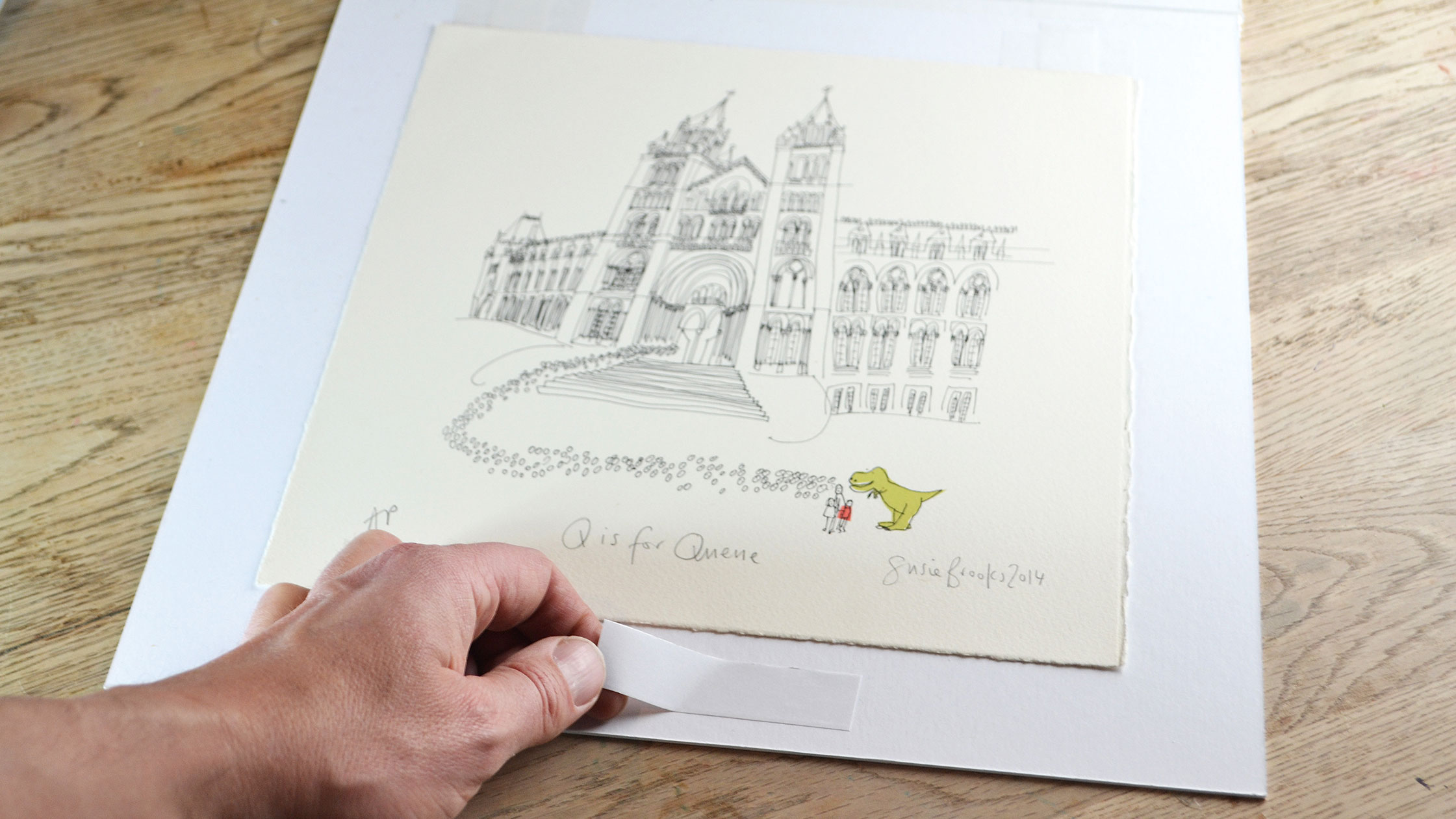
Once you’re satisfied with the hinges, flip the window mount back over and check everything is lined up. Once you're happy with the mount, stick a small strip of double-sided tape on the lower portion of the backing board and then press the window mount firmly on top. This will stop the two pieces of board from moving around. You've now learned how to mount your artwork as your mount is finished and ready for display or framing.
This article was originally published in Paint & Draw magazine.
Read more:
- Essential painting techniques for artists
- 5 things you need for oil painting
- Incredible drawing apps for iPad

Thank you for reading 5 articles this month* Join now for unlimited access
Enjoy your first month for just £1 / $1 / €1
*Read 5 free articles per month without a subscription

Join now for unlimited access
Try first month for just £1 / $1 / €1
